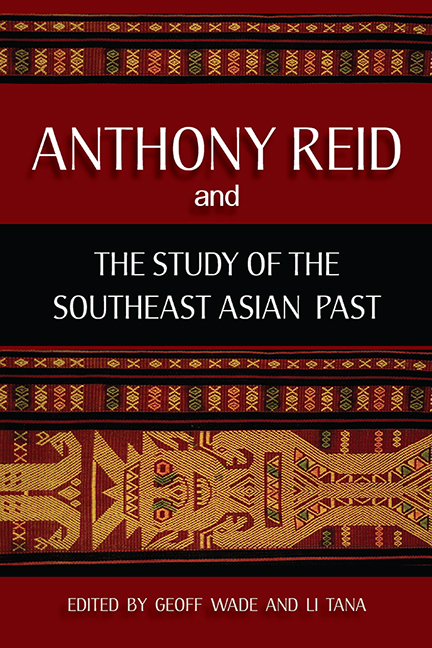Book contents
- Frontmatter
- Contents
- Acknowledgements
- The Contributors
- PART I Introduction
- PART II The Scholarship of Anthony Reid
- PART III Southeast Asia in the World
- 3 Southeast Asia and Eurasia during a Thousand Years
- 4 A Two-Ocean Mediterranean
- 5 The Concepts of Space and Time in the Southeast Asian Archipelago
- 6 Dominion over Palm and Pine: Early Indonesia's Maritime Reach
- PART IV Early Modern Southeast Asia
- PART V Modern Southeast Asia
- Appendix
- Index
- Plate section
4 - A Two-Ocean Mediterranean
from PART III - Southeast Asia in the World
Published online by Cambridge University Press: 21 October 2015
- Frontmatter
- Contents
- Acknowledgements
- The Contributors
- PART I Introduction
- PART II The Scholarship of Anthony Reid
- PART III Southeast Asia in the World
- 3 Southeast Asia and Eurasia during a Thousand Years
- 4 A Two-Ocean Mediterranean
- 5 The Concepts of Space and Time in the Southeast Asian Archipelago
- 6 Dominion over Palm and Pine: Early Indonesia's Maritime Reach
- PART IV Early Modern Southeast Asia
- PART V Modern Southeast Asia
- Appendix
- Index
- Plate section
Summary
Europeans know how important the Mediterranean Sea is in their history. In Asia, historians appreciate that Sea's connection with the powerful civilizations that arose there. But some are likely also to highlight it as the location for millennia of trading and military actions that ended with the division between the Christian West and core Islamic lands. It was that stalemate between the two civilizations from the seventh to the fifteenth century that finally led the Europeans to turn to the Atlantic in search of a new route to India and China. After that, new groups of actors emerged to dominate the modernization narrative for the next five centuries. The West steadily colonized large parts of Asia and brought their brand of imperialism everywhere. During that period, the Mediterranean syndrome of war and division took various shapes and underwent changes arising from relationships that became globalized in increasingly intense ways. Only recently, with the new wars in the Middle East, have we been reminded that the syndrome is alive both within and beyond its original home, and that it remains the seedbed of power struggles that the world faces today.
For Southeast Asia, the region's historians have been inspired by Fernand Braudel's study of the Mediterranean and some have been ready to compare the historical developments in the two regions. The work of Anthony Reid in the 1980s on the “Age of Commerce, 1450–1680” in Southeast Asia led the way. Denys Lombard then took the subject further and organized an international symposium on “La Méditerranée Asiatique” in 1997. Since then, we have also had Heather Sutherland's careful analysis of the very concept of the Mediterranean itself.1 For most historians, the conditions in Southeast Asia around the Java Sea and the South China Sea (shortened here as “Nanhai”) would make a very imperfect match for that Mediterranean. But the insights provided by Braudel's approach were certainly enlightening and using it to elucidate these maritime areas of Asia has certainly been worthwhile. Thus, interest remains and closer comparisons have become thinkable today. This essay honours Anthony Reid for having drawn attention to similarities and differences in Southeast Asia, and seeking to explain some new developments that now hinge on this region.
- Type
- Chapter
- Information
- Anthony Reid and the Study of the Southeast Asian Past , pp. 69 - 84Publisher: ISEAS–Yusof Ishak InstitutePrint publication year: 2012

